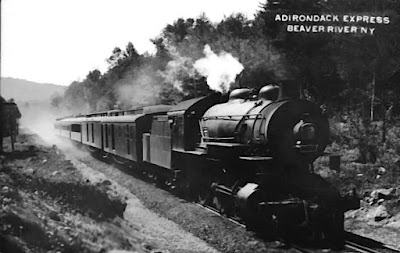The Railroad Changed Everything

Prior to the opening of the railroad in late 1892, it took a minimum of three days of hard travel to reach the upper Beaver River from Lowville, the nearest town with a transportation connection to the rest of the state. Once passenger trains started running, the trip could comfortably be accomplished in just hours from Utica where there were railroad connections to the rest of the nation. Dr. William Seward Webb, the man who financed the railroad, began to acquire the necessary right-of-way in early 1891. In the Beaver River area, he purchased about 350,000 acres lying between the St. Lawrence County line and the Fulton Chain of Lakes, including most of the land surrounding the upper reaches of the Beaver River. Dr. Webb only required a small sliver of this property for the railroad. In the short term, he intended to harvest the marketable timber from most of this property. He also planned to set aside 40,000 acres around Smith’s and Albany Lakes to create Nehasane Park, his pri...



